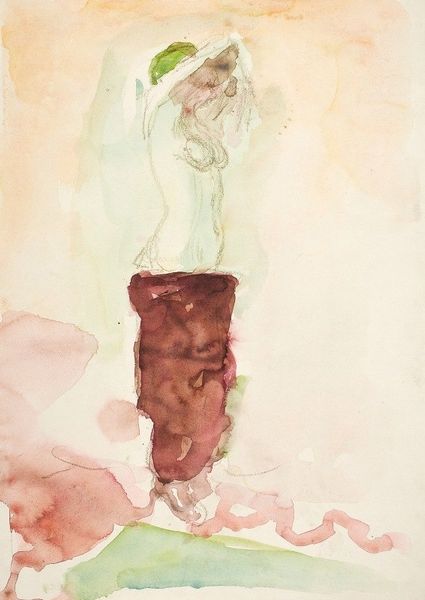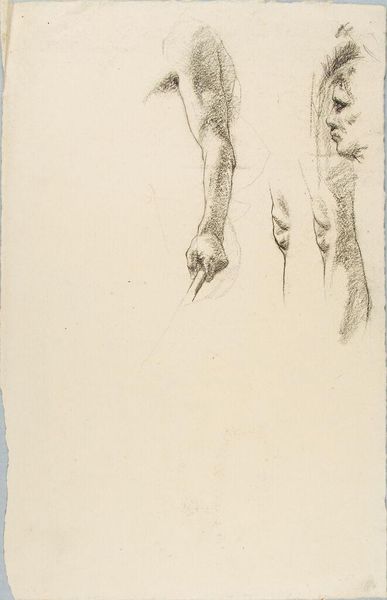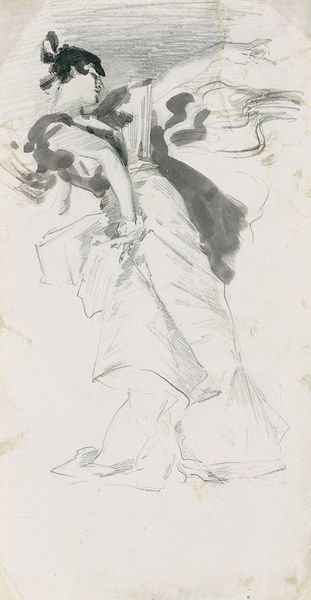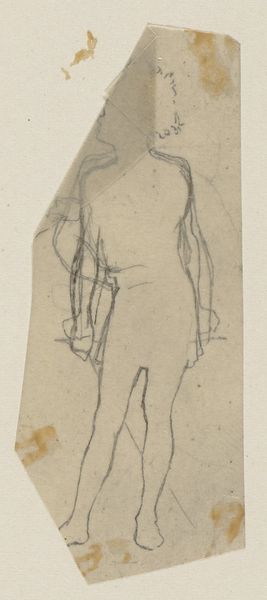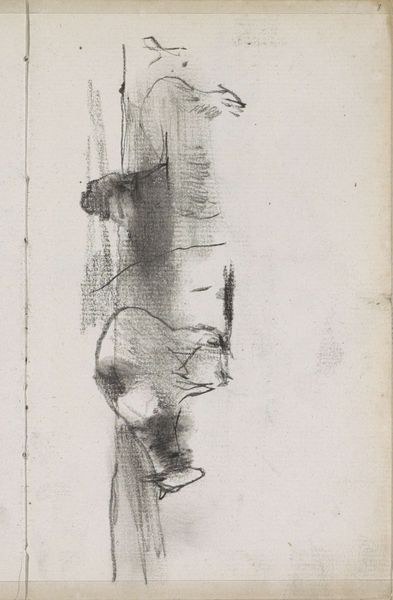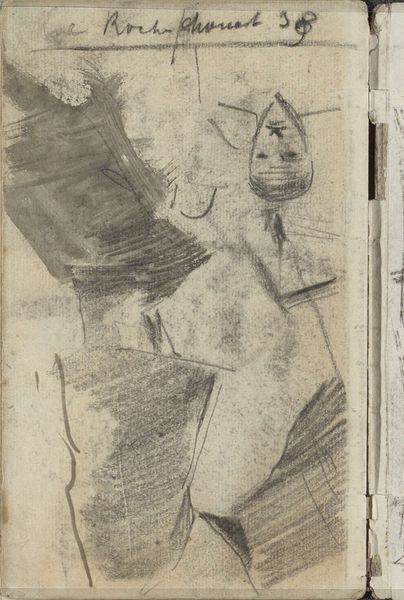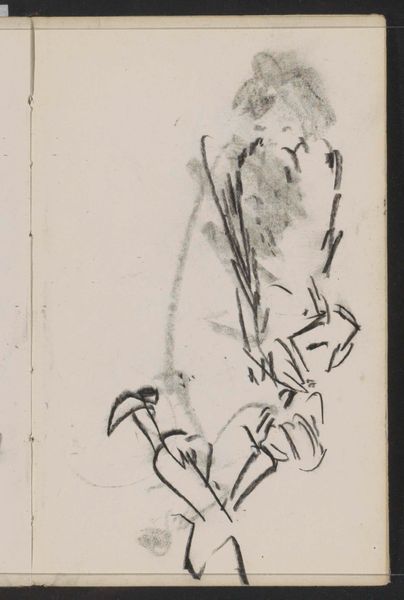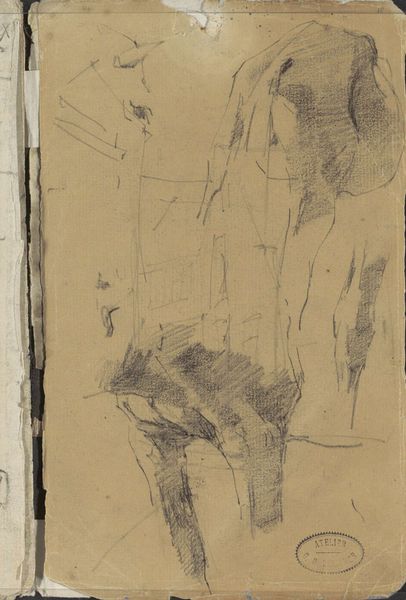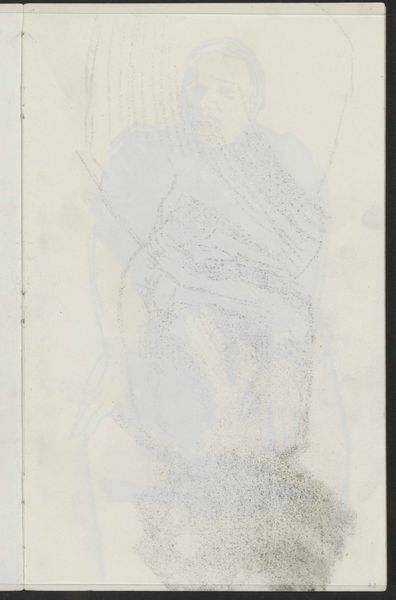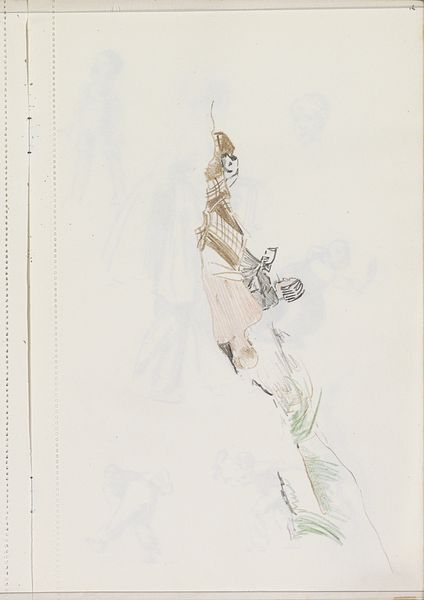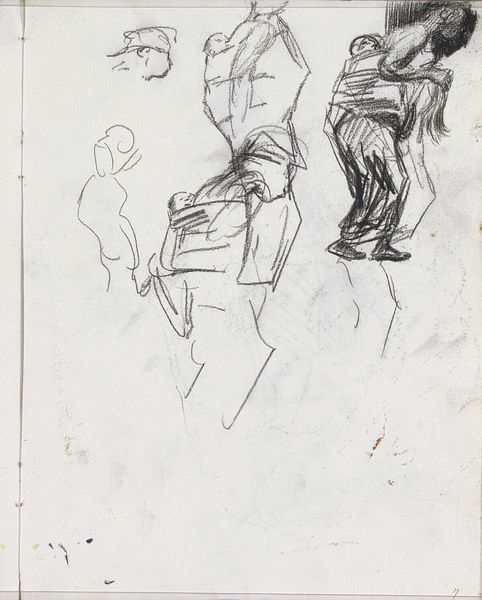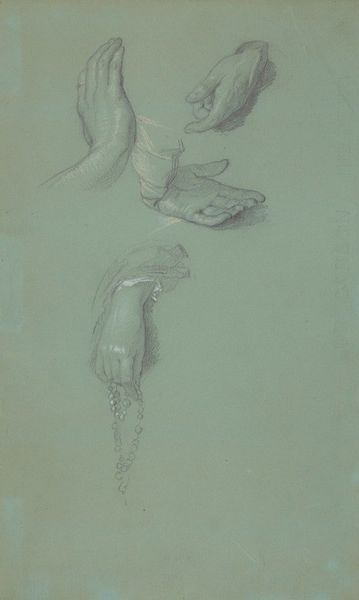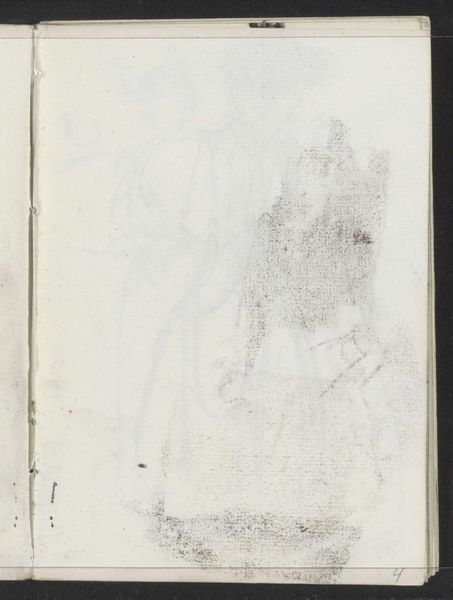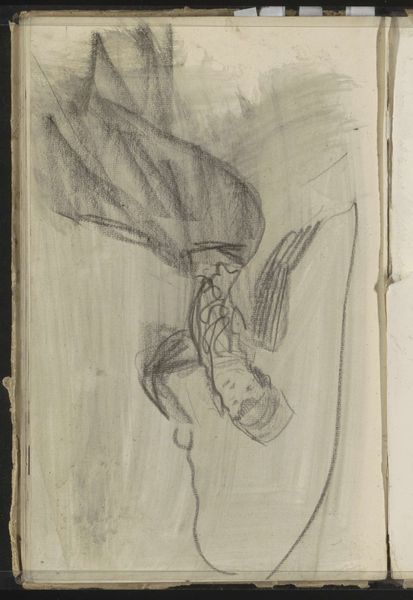
drawing, paper, watercolor, pencil
#
portrait
#
drawing
#
water colours
#
figuration
#
paper
#
watercolor
#
pencil
#
expressionism
#
nude
#
watercolor
Copyright: Public Domain: Artvee
Curator: Munch’s “Kvinnelig modellstudie,” a female nude study from around 1920, rendered in pencil and watercolor on paper. What catches your eye about this piece? Editor: The raw vulnerability of it. It’s a study, sure, but there's also a tangible exposure of both the subject and the artistic process itself, those washes of color feel very revealing. Curator: Exactly. It’s expressionistic, definitely – typical Munch in that sense. It departs from strict representation, embracing emotional expression above all else. The subject’s pose, arms raised above her head, is common but here it has this slight air of unease about it. Editor: That pose...it simultaneously feels like a celebration of the body, a reaching for something, but also a sort of yielding, right? I'm wondering about the politics of displaying the female form, especially in this era when ideas about female liberation were emerging alongside ongoing objectification. Was Munch self-aware in his treatment of his models, or was he perpetuating the same male gaze we see everywhere else? Curator: It's always a complicated question, the male gaze and art. He clearly sees beauty, yes, but perhaps there is a sadness there too. The looseness of the watercolor seems to imply the emotional turbulence roiling just below the surface. Editor: Absolutely. Those watery pigments, they don’t just depict; they almost *weep*. Thinking about how Munch wrestled with anxieties around sexuality and the feminine… how much of that seeps into our reading of this female form? Is this woman seen, or simply *felt* through Munch's own inner landscape? Curator: Possibly both? He struggled intensely with relationships, seeing women often as both madonna and temptress. So, you may be right to ask what parts vulnerability and idealization have here. Editor: It certainly invites contemplation, forcing us to confront our own preconceived notions about the body, gender, and the complex relationship between artist and model. Curator: It does. The sketchiness becomes an invitation—allowing us, demanding of us, to see more than what's literally presented. Thank you, that's an angle I had missed before.
Comments
No comments
Be the first to comment and join the conversation on the ultimate creative platform.
